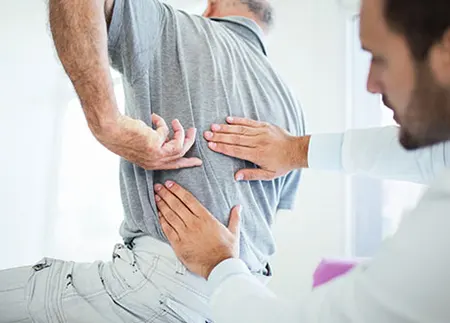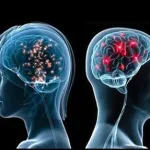Say Goodbye to Back Pain: Top 15 Expert Tips for Quick Relief in 2024

Overview of Back Pain
Back pain, a common ailment affecting millions worldwide, manifests as discomfort or soreness in the back region, ranging from mild discomfort to debilitating agony. It arises from various factors like poor posture, muscle strain, injury, or underlying medical conditions, impacting daily activities and quality of life. Understanding its root causes, seeking expert advice, and implementing preventive measures are crucial steps in managing and alleviating this pervasive condition. To begin proactively, We will give you 15 expert tips at the end of this lesson, for back care that are beneficial whether you’re currently experiencing discomfort or not.
What are the most common causes of back pain?
Back pain is a prevalent issue that affects individuals worldwide, and understanding its common causes is crucial for effective management and prevention.

-
Muscle or Ligament Strain: Back pain often arises from strain on the muscles or ligaments of the back. This strain can result from various activities such as repeated heavy lifting, sudden awkward movements, or maintaining poor posture for extended periods. Overexertion during physical activities or improper lifting techniques can lead to strain, causing discomfort or pain in the back area. Strengthening the core muscles through targeted exercises and adopting proper lifting techniques can help mitigate the risk of strain and reduce the likelihood of experiencing back pain.
-
Injuries and Trauma: Traumatic events such as car accidents, falls, or sports injuries can also contribute to back pain. These incidents can result in muscle sprains, strains, or even fractures in the spinal column. Additionally, individuals with osteoporosis are particularly susceptible to spinal fractures, as the bones become weakened and prone to breakage. Traumatic injuries to the back can cause acute or chronic pain, depending on the severity of the injury and the extent of damage sustained.
-
Issues in Joints and Vertebrae: Conditions affecting the joints and vertebrae in the lower back can also lead to back pain. Osteoarthritis, sacroiliac joint dysfunction, isthmic spondylolisthesis, and spinal stenosis are among the common culprits. These conditions often involve degeneration or abnormal changes in the spinal structures, leading to pain and discomfort in the affected area. Proper diagnosis and management of these underlying conditions are essential for effectively addressing back pain and improving overall spinal health.
-
Mechanical Problems: Mechanical issues related to the movement of the spine and its surrounding structures can result in back pain. These problems may include sprains, strains, or muscle spasms caused by improper movement or overexertion. Dysfunctions in the intervertebral discs, muscles, tendons, or ligaments can disrupt the normal mechanics of the spine, leading to pain and discomfort. Addressing these mechanical issues often involves therapeutic interventions aimed at restoring proper alignment and function of the spinal structures.
-
Inflammatory Conditions: Inflammatory conditions such as arthritis can contribute to chronic back pain. Inflammation in the joints or surrounding tissues can lead to stiffness, swelling, and discomfort in the back region. Managing inflammation through lifestyle modifications, appropriate medication, and targeted therapies is essential for alleviating symptoms and improving the quality of life for individuals with inflammatory-related back pain.
-
Medical Conditions: Certain medical conditions unrelated to the musculoskeletal system can also cause back pain. Conditions like kidney stones, infections, or herniated discs can lead to localized or radiating pain in the back area. Identifying and addressing the underlying medical condition is crucial for effectively managing back pain and preventing further complications.
Remember that individual experiences may vary, and seeking professional advice is essential for personalized care. If you notice persistent or severe back pain, consult a healthcare provider promptly.
What are the symptoms of back pain?
Back pain can manifest in various ways, and its symptoms depend on the underlying cause. Here are some common signs and symptoms associated with back pain:

Dull Aching or Stiffness: Back pain often presents as a persistent, dull ache or stiffness localized in the lower back region. This sensation is commonly reported by many individuals and can persist over time. The discomfort tends to intensify after extended periods of sitting, standing, or engaging in physical activity. Prolonged periods of inactivity, such as sitting at a desk for hours or standing for long durations, can exacerbate the stiffness and discomfort experienced in the lower back.
Similarly, physical activities that strain the back muscles, such as lifting heavy objects or performing repetitive movements, may also worsen the dull ache or stiffness. This symptom is indicative of muscle tension or strain in the lower back area, which may be exacerbated by poor posture, muscle imbalances, or underlying conditions affecting the spine.
Sharp or Shooting Pain: Sharp or shooting pain, commonly known as sciatica, is characterized by intense discomfort that radiates from the lower back down to the legs. This sensation is a prevalent symptom often associated with compression or irritation of the sciatic nerve. Sciatica can cause significant discomfort and mobility limitations, affecting daily activities and quality of life for those experiencing it.
Muscle Spasms: Muscle spasms in the back result in sudden, painful contractions of the muscles, often triggered by strain, injury, or underlying conditions. These spasms can cause significant discomfort and mobility limitations, impacting daily activities and overall well-being. Proper management and treatment are essential to alleviate the pain and prevent further complications associated with muscle spasms in the back.
Limited Range of Motion: Limited range of motion is a common manifestation of back pain, where individuals experience restrictions in movement, making it difficult to bend, twist, or engage in daily activities. This constraint in mobility is often accompanied by reduced flexibility, hindering the ability to perform routine tasks comfortably.
Simple actions like bending down to pick up objects or twisting to reach for items become challenging and may exacerbate the discomfort associated with back pain. The restricted range of motion can significantly impact one’s quality of life, impeding their ability to carry out essential activities and affecting overall well-being. Proper management and treatment strategies aimed at improving flexibility and restoring mobility are crucial in alleviating the limitations imposed by back pain and enhancing functional abilities.
Pain That Worsens with Certain Activities: Pain that exacerbates with certain activities is a common experience among individuals with back pain. Engaging in tasks such as lifting heavy objects, bending forward, or prolonged periods of sitting can intensify the discomfort in the back region. These activities often place additional strain on the muscles, ligaments, and structures of the spine, leading to increased pain and discomfort.
However, identifying specific triggers that exacerbate the symptoms can be instrumental in managing back pain effectively. By recognizing which activities or movements worsen the pain, individuals can modify their behaviors and adopt strategies to alleviate strain on the back. This proactive approach may involve practicing proper lifting techniques, incorporating ergonomic adjustments in the workplace or home environment, or seeking professional guidance on posture and body mechanics. By taking steps to avoid or minimize activities that aggravate back pain, individuals can better manage their symptoms and improve their overall quality of life.
Numbness or Tingling: Numbness, tingling, or a “pins and needles” sensation in the legs or feet is a common occurrence associated with back pain, often stemming from nerve compression or irritation. These sensations can be disruptive and uncomfortable, affecting mobility and daily activities. It is essential to address the underlying cause of nerve compression or irritation to alleviate these symptoms and prevent further complications.
Weakness in Legs: Severe back pain can lead to weakness in the leg muscles, compromising balance and stability. This weakness may impede mobility and daily activities, highlighting the importance of seeking medical attention if the weakness persists. Addressing the underlying cause of back pain is crucial in preventing further muscle weakness and restoring strength and function to the legs.
Pain That Improves with Rest: Back pain often temporarily subsides with rest and changes in position. While resting may provide temporary relief, chronic pain necessitates a comprehensive approach for long-term management. It’s essential to address the underlying factors contributing to the pain through a combination of treatment modalities such as physical therapy, medication, and lifestyle adjustments to effectively manage chronic back pain and improve overall quality of life.
Remember that back pain can have various causes, including muscle strain, herniated discs, arthritis, and spinal conditions. If you experience persistent or severe symptoms, consult a healthcare professional for proper evaluation and management.
What are the different types of back pain?
Back pain can be quite complex, and understanding its various types is essential. Let’s explore the different classifications of back pain:
Lower Back Pain (Lumbar Pain)
Lower back pain, also referred to as lumbar pain, primarily affects the lumbar region of the spine. This area encompasses the lower back and is a common site for experiencing discomfort. Various factors contribute to lower back pain, including muscle strain, which can result from overuse, poor posture, or sudden movements that place undue stress on the muscles in the lower back. Herniated discs, another common cause, occur when the soft inner material of a spinal disc protrudes, putting pressure on nearby nerves and causing pain. Additionally, sciatica, characterized by irritation of the sciatic nerve, often manifests as pain that radiates from the lower back down the leg.
Lastly, spinal stenosis, which involves the narrowing of the spinal canal, can lead to nerve compression and subsequent lower back pain. These causes may result from a combination of factors such as aging, injury, degenerative changes in the spine, or underlying medical conditions. Proper diagnosis and treatment tailored to the specific cause of lower back pain are essential for effectively managing symptoms and improving overall well-being.
Upper Back Pain (Thoracic Pain)
Upper back pain, also known as thoracic pain, primarily affects the upper back region corresponding to the thoracic spine. This area, situated between the cervical and lumbar spine, is prone to experiencing discomfort due to various factors. One common cause of upper back pain is poor posture, such as slouching or sitting for extended periods, which can strain the muscles in the upper back. Additionally, osteoarthritis, characterized by the degeneration of spinal joints, can contribute to upper back pain, leading to stiffness and discomfort. Muscle imbalance, often resulting from weakness in the upper back muscles, can also predispose individuals to experiencing pain in this area.
Furthermore, fractures or trauma to the vertebrae or ribs can cause acute or chronic upper back pain, particularly following accidents or injuries. These causes may be exacerbated by repetitive movements, lifting heavy objects, or underlying medical conditions. Proper diagnosis and management of upper back pain are crucial for addressing the underlying cause and alleviating symptoms to improve overall comfort and function.
Acute Back Pain
Acute back pain is characterized by its short duration, typically lasting for less than six weeks. This type of pain often arises suddenly and can be attributed to various causes. One common cause of acute back pain is strains or sprains, which occur due to sudden injuries or overexertion of the muscles and ligaments in the back. Incorrect lifting techniques, especially when lifting heavy objects, can also lead to acute back pain, as the strain placed on the back muscles can result in injury.
In some cases, acute back pain may be caused by infections or inflammation, although this is relatively rare. These infections can affect the spinal structures, leading to pain and discomfort. Despite its short-lived nature, acute back pain can be debilitating and may require prompt medical attention to alleviate symptoms and prevent further complications. Treatment for acute back pain typically involves rest, pain management techniques, and, in some cases, physical therapy to promote healing and prevent recurrence.
Chronic Back Pain
Chronic back pain, lasting for more than 12 weeks, is characterized by persistent discomfort and can significantly impact an individual’s quality of life. This prolonged duration distinguishes chronic pain from acute episodes, often lasting less than six weeks. Various underlying factors contribute to chronic back pain, including degenerative conditions such as osteoarthritis, spinal stenosis, or disc degeneration, which involve the gradual breakdown of spinal structures over time. Structural abnormalities like scoliosis or abnormal spinal curvature can also contribute to chronic pain by placing undue stress on the spine and surrounding tissues.
Additionally, psychosocial factors such as stress, depression, or anxiety may exacerbate chronic back pain, influencing pain perception and coping mechanisms. These multifaceted causes often require a comprehensive approach to management, addressing both physical and psychological aspects to effectively alleviate symptoms and improve overall well-being.
What are the best Treatments to relieve back pain?
When it comes to relieving back pain, there are several effective treatments and self-care strategies. Here are some recommendations:
-
Self-Care and Home Remedies: When it comes to managing back pain at home, there are several self-care strategies to consider. First, using an over-the-counter gel with anti-inflammatory and pain-relieving properties can be effective when applied directly to the affected area. Additionally, applying an ice pack to the painful area can help reduce inflammation and numbness, providing temporary relief. It’s also important to maintain proper sleeping positions to minimize strain on the spine and to identify triggers that worsen back pain, such as certain movements or activities, and take steps to alleviate them. Using a warm compress can help ease muscle tension, and giving your back a break from strenuous activities by resting is essential for allowing it to recover.
-
Professional Medical Care: Seeking professional medical care is crucial for managing back pain effectively. Initially, consulting with a primary care physician for an evaluation and advice is recommended. If the back pain persists or worsens, it may be necessary to seek the expertise of an orthopedician, who specializes in bone disorders and spine-related issues, for further evaluation and treatment options.
-
Massage: For back pain caused by tense or overworked muscles, massage therapy can be beneficial. Massage helps relax tight muscles, improve blood circulation, and reduce pain and discomfort in the affected area.
-
Yoga: Engaging in yoga can be an effective way to alleviate back pain. Yoga poses and stretches can help stretch and strengthen the muscles in the back, improve posture, and promote relaxation. Incorporating yoga into your routine may help reduce back pain and prevent future episodes.
-
Pain Relievers: Over-the-counter pain medications such as acetaminophen or nonsteroidal anti-inflammatory drugs (NSAIDs) can provide relief from back pain. These medications can help reduce inflammation and alleviate pain, making daily activities more manageable.
-
Heat Therapy: Applying heat therapy to the affected area can help soothe muscle spasms and discomfort associated with back pain. Using a heating pad or warm compress can improve blood flow to the area, relax tense muscles, and provide temporary relief from pain and stiffness.
Remember that individual responses to treatments vary, and it’s essential to consult a healthcare professional for personalized advice. If you experience persistent or severe back pain, seek medical attention promptly.
Top 11 Expert Tips for Quick Relief
When it comes to alleviating back pain from the comfort of your home, there are numerous effective remedies you can try, keeping in mind that individual responses may vary. Here’s a breakdown of home remedies to consider:
-
Exercise to Get Muscles Moving: Engage in low-impact activities like walking, swimming, or yoga to promote circulation and flexibility. Strengthening your core muscles through targeted exercises can provide additional support to your back and help prevent future pain episodes.
-
Improve Posture: Maintaining good posture is essential for reducing strain on your back. Practices like yoga, Pilates, or tai chi can help improve posture by enhancing body awareness, alignment, and muscle strength.
-
Heat and Cold Therapy: Applying a warm compress or heating pad to the affected area can increase blood flow, relax muscles, and ease tension. Conversely, using a cold compress or ice pack can help reduce pain and inflammation by numbing the area and constricting blood vessels.
-
Stretching: Regular stretching is crucial for loosening tight muscles, improving flexibility, and promoting blood flow to the affected area. Focus on gentle stretches that target your back and hamstrings to alleviate tension and discomfort.
-
Pain Relief Creams: Topical creams containing capsaicin or arnica can provide localized relief by reducing pain and inflammation when applied directly to the affected area as directed.
-
Massage and Arnica: Massage therapy can help relax muscles, improve circulation, and reduce swelling in the back. Additionally, arnica, a natural remedy, may offer relief from sore muscles and discomfort when applied topically.
-
Switch Shoes: Opt for supportive footwear that distributes weight evenly and cushions your spine. Avoid high heels or shoes that put undue pressure on your back, as they can exacerbate pain and discomfort.
-
Workstation Changes: If you spend long hours at a desk, ensure your workstation is ergonomically designed to support your back and promote proper posture. Adjust your chair height, monitor position, and keyboard alignment to reduce strain on your spine.
-
Prioritize Sleep: Invest in a supportive mattress and pillows to maintain proper spinal alignment and alleviate pressure on your back while sleeping. Experiment with different sleep positions and use pillows strategically to support your back as needed.
-
Diet and Hydration: Incorporate anti-inflammatory foods like turmeric, ginger, and omega-3 fatty acids into your diet to reduce inflammation and promote healing. Stay hydrated by drinking plenty of water, as dehydration can exacerbate muscle tension and discomfort.
-
Manage Stress: Chronic stress can contribute to back pain by causing muscle tension and exacerbating existing discomfort. Practice stress management techniques such as deep breathing exercises, meditation, or mindfulness to promote relaxation and reduce tension in the body.
- Enhance your mattress selection: Your choice of mattress plays a crucial role in providing long-term support for your back, prompting significant research to find the ideal match. Recent studies indicate that the commonly held notion of extremely hard mattresses as the best option is not entirely accurate. Conversely, overly soft mattresses also fall short. Instead, mattresses with a firm or medium-firm level of support appear to be preferable. However, the key lies in experimenting with various mattress types to determine the most suitable one for your body’s needs.
- Aquatic therapy: Aquatic therapy, which involves exercising in water, offers numerous benefits for the back. The natural resistance provided by water enhances the effectiveness of movements while also enabling the body to move more freely. Moreover, exercising in water alleviates stress on the spine, making it an ideal option for individuals recovering from injuries. While swimming and aquacise are commonly recommended for rehabilitation purposes, they also serve as excellent preventative exercises. These activities help strengthen back muscles in a low-impact environment, reducing the risk of future injuries and promoting overall back health.
- Essential tips for backpack use: Despite the resurgence of backpacks in adult fashion, it’s important to understand proper usage to prevent strain on the back and maintain balance. Many individuals tend to wear their backpacks too loosely, causing them to sway away from the body. Additionally, overloading the backpack with heavy items can exert pressure on the muscles and spine, leading to discomfort and potential injury. To address these issues, experts recommend several key practices. Firstly, opt for a smaller backpack to limit the amount of items you carry. This not only reduces the load but also encourages more mindful packing. Secondly, ensure that your backpack fits snugly against your back to distribute weight evenly and minimize strain. Finally, when loading your backpack, place heavier items closer to your body to maintain stability and balance. By following these expert tips, you can optimize the comfort and functionality of your backpack while promoting the health of your back.
- Explore Tai Chi: Tai Chi emerges as a beneficial inclusion in the array of exercises aimed at alleviating back pain. This ancient martial art offers a low-impact approach that emphasizes posture, controlled breathing, and deliberate, gentle movements. Engaging in Tai Chi not only provides relief for back pain but also enhances body awareness. Through its mindful practice, Tai Chi fosters a deeper connection with one’s body, enabling individuals to gain insight into what supports or challenges their back health. By incorporating Tai Chi into your routine, you can cultivate a heightened awareness of your body’s needs and contribute to the overall well-being of your back.
Conclusion:
In conclusion, prioritizing Back health is essential for maintaining overall well-being and quality of life. By implementing a combination of lifestyle changes, exercises, and preventive measures, individuals can effectively manage and alleviate issues related to back health. From incorporating regular exercise routines and mindful practices like yoga and Tai Chi to adopting ergonomic workstations and proper lifting techniques, there are various strategies available to promote a healthy back.
Additionally, maintaining a balanced diet, staying hydrated, and managing stress levels contribute significantly to back health. Remember, a proactive approach to back health not only reduces the risk of discomfort and injury but also enhances mobility, flexibility, and overall quality of life. By making conscious choices and prioritizing back health, individuals can enjoy a life free from the limitations imposed by back-related issues.
FAQs:
Q: How can I improve my back health if I sit at a desk for long hours each day?
Answer: To enhance back health while sitting for extended periods, it’s crucial to prioritize ergonomic workspace setup. Ensure your chair supports the natural curve of your spine, keep your feet flat on the floor or a footrest, and position your computer screen at eye level to reduce strain on your neck and back. Take regular breaks to stretch and move around, incorporating simple exercises like shoulder rolls, neck stretches, and seated twists to promote circulation and alleviate stiffness.
Q: Are there specific exercises I can do to strengthen my back muscles and improve Back health?
Answer: Yes, there are several exercises tailored to enhance back health and strengthen the muscles supporting the spine. Core-strengthening exercises such as planks, bridges, and bird dogs target the muscles of the abdomen, lower back, and hips, promoting stability and reducing the risk of injury. Additionally, activities like yoga, Pilates, and Tai Chi emphasize flexibility, posture, and body awareness, contributing to overall back health and resilience.
Q: What are some ergonomic tips for maintaining good back health while working at a computer?
Answer: Ergonomic considerations are essential for preserving back health during prolonged computer use. Opt for an adjustable chair with lumbar support to maintain the natural curve of your spine and position your keyboard and mouse at elbow height to minimize strain on your shoulders and arms. Take regular breaks to stretch and change positions, and consider using a standing desk or ergonomic accessories like a monitor riser or ergonomic keyboard to support proper posture and reduce discomfort.
Q: How does stress impact back health, and what strategies can I use to manage stress effectively?
Answer: Stress can exacerbate tension in the muscles of the back and neck, contributing to discomfort and compromising back health. Incorporating stress management techniques such as mindfulness meditation, deep breathing exercises, and progressive muscle relaxation can help alleviate tension and promote relaxation. Engaging in regular physical activity, maintaining a balanced lifestyle, and seeking support from friends, family, or a mental health professional can also play a significant role in managing stress and supporting Back health.
Q: Are there any dietary changes or supplements that can support back health and prevent discomfort?
Answer: While maintaining a healthy diet rich in nutrients is essential for overall well-being, certain foods and supplements may offer specific benefits for back health. Consuming foods high in anti-inflammatory properties, such as fatty fish rich in omega-3 fatty acids, fruits, vegetables, and whole grains, can help reduce inflammation and support joint health. Additionally, supplements like glucosamine, chondroitin, and turmeric may help alleviate joint pain and stiffness, promoting back health and mobility. It’s essential to consult with a healthcare professional before starting any new supplement regimen to ensure safety and effectiveness.













